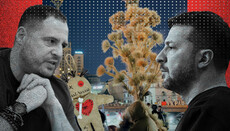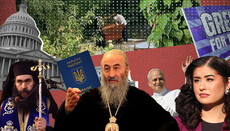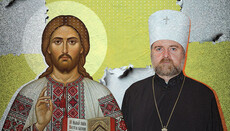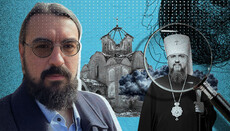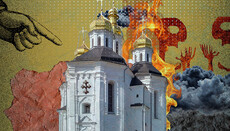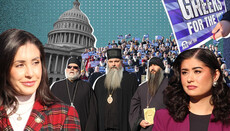Faith "anew": Mykolaichyk and Christmas vs Saint Nicholas and Nativity
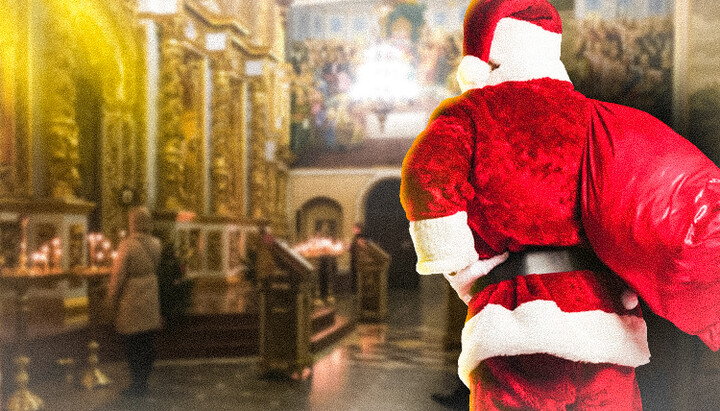
Winter holidays are over in Ukraine, celebrated for the first time at the state level according to the new calendar style. Let's delve into the outcomes of this change.
In 2023, the Orthodox Church of Ukraine (OCU) and the Ukrainian Greek Catholic Church (UGCC) synchronously transitioned to the new calendar style. All holidays, including winter ones, shifted by 13 days: Saint Nicholas Day was celebrated on December 6 instead of the 19th, Christmas on December 25 instead of January 7, and Epiphany on January 6 instead of the 19th. This transition was supported, if not initiated, by the government, which deemed the Julian church calendar unlawful, canceling holidays on Christmas, the Intercession of the Virgin, and the Day of Baptism of Rus.
Volodymyr Zelensky: "Today, all Ukrainians together, we all celebrate Christmas on the same date as one big family, one nation, one united country."
In other words, Zelensky claims that all Christians in the country have switched to the new style. This was also supported by the police.
Maxym Akhrameev – Head of the Department for Preventive Activities of the National Police: "Well, a large number of citizens decided to celebrate the Nativity of Christ on December 25. It's almost 10 million citizens who visited about 7000 cult buildings."
However, how realistic is this claim?
American authorities state that the population of Ukraine is currently 28 million.
U.S. Republican Senator Jay D. Vance: "The country's population has decreased from 40 million to 28 million."
So, our authorities assert that for the new-style Christmas, which fell on a working day, every third Ukrainian, including atheists, Muslims, Jews, or soldiers on the front line, attended the churches of the OCU and UGCC. This includes the believers of the Ukrainian Orthodox Church, numbering around 5-6 million. If we divide 10 million people by 7,000 churches, it turns out that around 1600 people gathered in each church.
Let's take a look at several churches:
- Patriarchal Cathedral of the UGCC in Kyiv, the main church of the Greek Catholics. Despite its enormous size, it appears semi-empty, with no more than 150-200 people attending festive services.
- Christmas Vigil in the OCU at the Assumption Cathedral of the Kyiv Pechersk Lavra, where only 30-40 people are visible.
- Christmas Liturgy in the Cathedral of Zaporizhzhia – attended by 40-50 people.
- Hierarchical service of the Dnipro Eparchy of the OCU – similarly 40-50 attendees.
Meanwhile, in the UOC churches, we observe crowded spaces during Christmas services. Examples include the Pochaiv Lavra, the Divine Liturgy in the Kyiv Lavra Church of St. Agapitus of Pechersk, and Christmas worship in Sumy. Similar situations occurred during the Epiphany services when many people traditionally come to churches to have water blessed.
Comparing the situation in Khmelnytskyi in Western Ukraine, traditionally strong for the OCU, we see photos from January 6th in the UOC cathedral seized by the OCU (upper photo) and pictures from January 19th in the St. Nicholas Cathedral (lower photo).


In summary, despite President Zelensky's statement that "we all celebrate Christmas on the same date as one big family," the reality suggests otherwise. The majority of people continue to celebrate as they always have. What did this calendar shift achieve, and what was its purpose?
Georgiy Kovalenko, a "priest" of the OCU: "The war has accelerated these processes. A political component has been added to this. Now we can truly distinguish the Ukrainian Church from the Moscow Patriarchate, including the days on which holidays are celebrated. Remaining on the old calendar now means being in the same space as the Moscow Patriarchate."
Thus, Georgiy Kovalenko suggests three important theses:
- The transition to the new style further deepened the gap between UOC and OCU believers, exacerbating the division in Ukrainian society.
- The transition was deemed necessary due to the ongoing war.
- Adhering to the old style means being in the same space with the Moscow Patriarchate.
Kovalenko emphasizes that this transition aimed to distinguish the Ukrainian Church from the Moscow Patriarchate, especially in terms of holiday observances. However, he overlooks the fact that several Orthodox Churches, including the UOC, still follow the Julian calendar. Can they all be labeled as "Moscow-affiliated"?
Among the Local Churches that live by the Julian calendar, in addition to the ROC, are Jerusalem, Serbian, Macedonian, Georgian, Polish Churches, Mount Athos. The UOC also observes the old style. Can we say that all these Churches are "Moscow"?
The response from the Phanar is evident. On January 7th, Patriarch Bartholomew led the liturgy for the Russian community in Istanbul on Christmas. On January 19th, he conducted the Epiphany service using the old style in the Turkish city of Zeytinbagi. During the service, Ukrainian Consul Roman Nedilsky prayed with Bartholomew, extending wishes for a long life to Patriarch Kirill of the Russian Orthodox Church. This clearly indicates that the Julian calendar is not considered exclusively "Moscow-affiliated" at the Phanar. Why, then, should it be perceived as such in Ukraine? Is it solely due to the ongoing war?
Interestingly, there were attempts to transition to the new style in Ukraine during the war 83 years ago. In 1941, Ukrainian newspapers expressed sentiments favoring alignment with the new European calendar:
Kremenchug newspaper "Dniprova Khvylia," 1941: "We will have the opportunity to celebrate Christmas together with our friends and allies – the peoples of Western Europe, and above all – with the great German people."
"Ukrainske Slovo," Zolotonosha, 1941: "We are confident that soon the time will come when the Ukrainian people, a people that will become part of the new Europe, will adopt the new calendar used by all European nations. Thus, neither a single enterprise nor a single Ukrainian should work on these great days, paying respect to our liberators."
While Germany is not seeking to conquer Ukraine today, Russia is, yet the arguments for the new calendar from the authorities remain unchanged.
Andriy Yurash, Ukraine's ambassador to the Vatican, states: "This is also a form of a certain gratitude for the support that our state feels from the majority of the Western spiritual oikumene in this terrible struggle. We are all part of the Western world. And we must confirm this belonging."
However, these arguments have no direct relevance to faith whatsoever.
Let's examine how the authorities and society perceive church holidays, the saints of the Church, and Christ Himself.
In schools and kindergartens, St. Nicholas replaces Did Moroz (Grandfather Frost). There, women are seen wearing priestly attire and distributing gifts to children without hesitation. The situation is even more intense among adults.
The "new-style" St. Nicholas is portrayed as a bloodthirsty god of war wielding machine guns and tanks, bringing the corpses of enemies as gifts to Ukrainians. Television channels contribute to this narrative, expressing wishes for every Ukrainian to find bodies of killed enemies under their Christmans trees.
"Saint Nicholas" on 24 channel: "We are wishing you to find a "well-chilled Moskal" (Russian) under your Christmas tree, preferably stacked in piles."
Military greetings depict a pilot in the robes of a saint, adorned with the emblem of the Armed Forces of Ukraine (AFU), loading projectiles into a combat helicopter, ultimately firing upon the enemy. The so-called "saint" in this imagery has a demonic face with a snarling grin.
Similar military-themed congratulations were extended for the new-style Christmas. Ukrainians were urged to "defend Christmas" with missile strikes from land and air. Meanwhile, depictions of Christ on social media portrayed Him as a muscular figure armed with a gun machine.
In Rivne, a new-style carol was altered to remove Christ entirely, leaving only people and machine guns.
In Lviv, Uniate seminarians toured churches with a musical program, featuring a drummer playing virtually between the Holy Gates of a cathedral.
This phenomenon is not new to Ukraine; it existed in previous years, including nativity scenes with devils at the UGCC church in Zarvanytsia, a show with Putin in Truskavets, and pagan songs in the Sts. Peter and Paul Cathedral in Lviv. Now, these events have been spread across different times of the year.
In Ukraine, December 6 is celebrated as Mykolaichyk Day, while December 19 as the feast of St. Nicholas, December 25 as a loud "patriotic" Christmas with the entire civilized world, while January 7 as a quiet celebration of the birth of the Christ Child. July 15 is declared Statehood Day, and July 28 is the day of the spiritual birth of the Ukrainian people.
The government has outlawed Orthodox Ukrainians, further dividing already divided people, and pretending that we don't exist. Let it be. However, nothing in the world happens without God's permission.
Currently, we are being clearly shown two paths: on one side are Ukrainian patriotic socio-political organizations with a religious twist, and on the other side is Christ's Church, where nothing changes. The Church continues to prepare citizens, regardless of nationality—Ukrainian, German, or Russian, for the Kingdom of Heaven. The choice of the path is ours.
